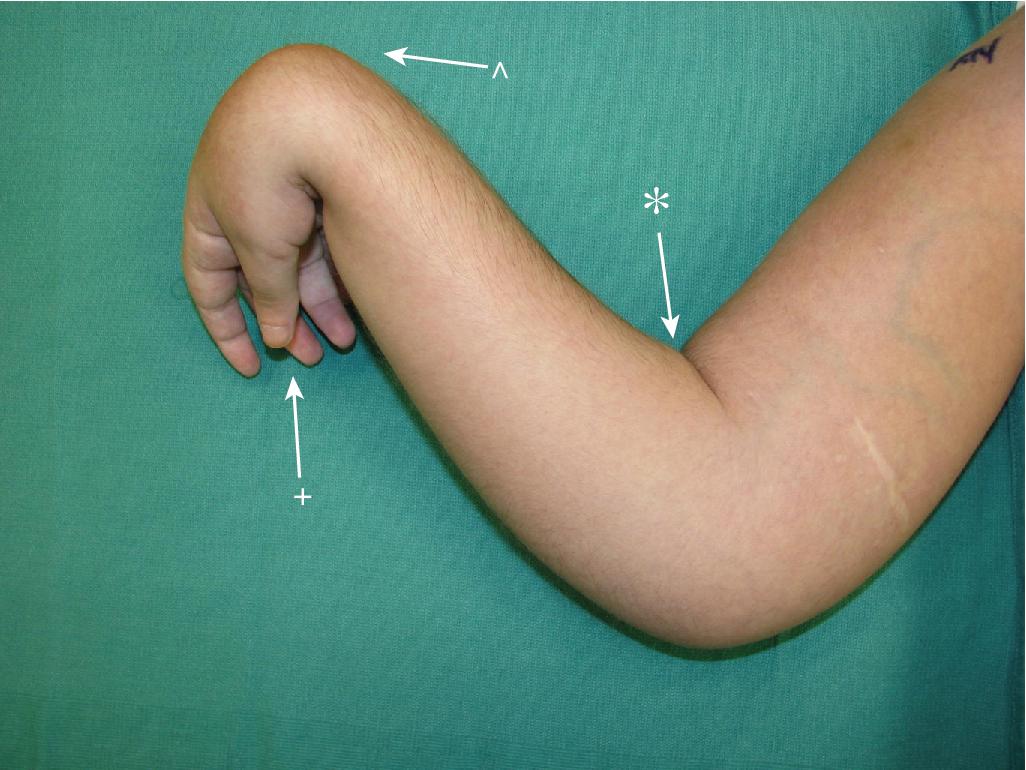Physical Address
304 North Cardinal St.
Dorchester Center, MA 02124
One indication is a spastic elbow contracture from upper motor neuron injuries (which are frequently the result of cerebral palsy, stroke, or traumatic brain injury).
Any neurologic injury should be stable.
In patients with volitional control, flexion contractures of 40 degrees may benefit from surgical lengthening.
Without volitional control, surgery is reserved for contractures over 100 degrees, principally to facilitate hygiene care.
The goals of surgery are to help with activities of daily living, allow adequate hygiene, and improve appearance. Improvement of function after surgery in spastic limbs can be difficult to predict.
Contracture surgery should be delayed in any patient with ongoing, progressive neurologic injury.
Patients should undergo a thorough course of conservative treatment, including therapy, serial splinting, oral spasmolytics (e.g., baclofen, dantrolene), and perhaps botulism injections before being considered for surgery.
Patient cooperation, spasticity, and inconsistent volitional control may make clinical examination difficult.
The level of cerebral or spinal cord involvement dictates how much of the extremity is functional and which muscles become spastic.
A common presentation of upper extremity spasticity combines shoulder adduction and internal rotation, elbow flexion, wrist flexion, forearm pronation, finger flexion, and thumb adduction ( Fig. 99.1 ).

Voluntary motor control and sensibility of the extremity must be determined. Patient intelligence and any global athetoses must also be taken into account.
The examiner must differentiate between extrinsic muscle spasticity or contracture and intrinsic joint contracture.
Pure muscle spasticity will reveal full joint range of motion (ROM) when the surrounding muscles relax (if able) or are fatigued. Administration of a local nerve block may relax spasticity and permit more passive motion.
Muscle and joint contractures will limit passive ROM. These can be difficult to distinguish around the elbow. If contracted muscles cross two joints (e.g., biceps brachii, extensor carpi radialis longus [ECRL], extensor carpi radialis brevis [ECRB]), relaxation at the adjacent joint will yield a slight increase in elbow motion.
Observation of routine tasks is invaluable when evaluating a patient’s current function and needs.
Having a patient perform a task with both hands indicates whether the patient understands directions and will highlight functional deficits.
Cerebral palsy is a static, nonprogressive central nervous system injury that affects children from birth or shortly after and can manifest as a wide range of functional and cognitive deficits. These children often do not have joint contractures beneath their spastic muscles. Surgery is usually delayed until after the child has developed functional use of the extremity (usually after 6 years of age), which should be evaluated over multiple visits. Video recording the child can be helpful. Reconstruction in older patients should proceed with great care, because these patients are frequently able to compensate or adapt to their available level of function.
After a stroke, neurologic recovery occurs throughout the first 6 months and any surgery should be delayed for at least a year after injury. Stroke patients are frequently older with weaker muscles that have had fewer years of abnormal tone. Thus spasticity occurs to a lesser degree than in cerebral palsy. The recovery of motor function can be poor in older people, but surgery may aid with positional and contracture correction.
After a traumatic brain injury, spontaneous recovery can occur for up to 18 months, and surgery should not be attempted during this time. Patients are frequently younger. There is often quadriplegic involvement and concomitant peripheral nerve injuries or fractures, which can cause deformity. Heterotopic ossification, particularly around the elbow, can cause joint contractures. Depending on the injury, patient cognition and cooperation is variable.
Elbow x-rays are essential before any planned operation to evaluate for joint integrity and the presence of heterotopic ossification.
Computed tomography (CT) or magnetic resonance imaging (MRI) may be required if the joint structure cannot be elucidated on radiographs (e.g., from prohibitive positioning).
Dynamic electromyography helps to identify spastic and flaccid muscles, as well as the patient’s phasic activity, if the examination is unreliable. Evaluation in the elbow should include the biceps, brachialis, and brachioradialis.
Become a Clinical Tree membership for Full access and enjoy Unlimited articles
If you are a member. Log in here